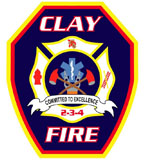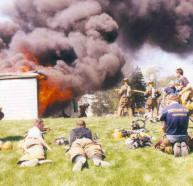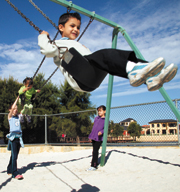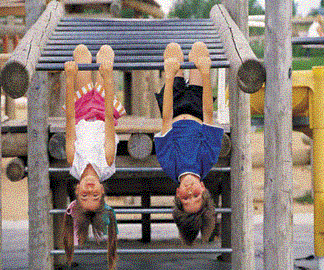

playground safety

Playgrounds and outdoor play equipment can provide
your child with fun, fresh air, and exercise, but they can also pose
some safety hazards. Faulty equipment, improper surfaces, and careless
behavior are just a few of the dangers that cause children on
playgrounds to visit hospital emergency departments.
Each year, more than 200,000 kids are treated in hospital ERs for playground-related injuries. Many of these injuries could have been prevented with the proper supervision.
You can make the playground a place that's entertaining and safe for your child by checking equipment for potential hazards and following some simple safety guidelines. In addition, teaching your child how to play safely is important: if your child knows the rules of the playground, it's less likely he or she will get hurt.
Adult Supervision
Parents can help prevent playground accidents by taking some precautions, ensuring that there is adult supervision at the playground, and making sure that any equipment that their child plays on is appropriate to his or her age and maturity level.
Adult supervision can help prevent injuries by making sure kids properly use any playground equipment and don't engage in unsafe behavior around it. If an injury does occur, an adult can assist the child and administer any needed first aid right away.
Kids should always have adult supervision when they're at the playground. Young children (and sometimes older ones) can't always gauge distances properly and aren't capable of foreseeing dangerous situations by themselves. Older children often love to test their limits on the playground, so it's important for an adult to be there to keep them in check.
Before you visit a playground, check to make sure that play areas are designed to allow an adult to clearly see kids while they are playing on all the equipment.
Teaching Your Child About Playground Safety
Safe playground equipment and adult supervision are extremely important, but it's only half of the equation: Kids must know how to be safe and act responsibly at the playground. Here are some general rules to teach your child:
- Never push or roughhouse while on jungle gyms, slides, seesaws, swings, and other equipment.
- Use equipment properly - slide feet first, don't climb outside guardrails, no standing on swings, etc.
- If you jump off equipment, make sure that you check to make sure that there are no other children are in the way. When you jump, land on both feet with knees slightly bent.
- Leave bikes, b
 ackpacks,
and bags away from the equipment and the area
where you're playing so that no one trips over
them and falls.
ackpacks,
and bags away from the equipment and the area
where you're playing so that no one trips over
them and falls. - Playground equipment should never be used if it is wet because moisture causes the surface to be slippery.
- During the summertime, playground equipment can become uncomfortably or even dangerously hot, especially metal slides. So use good judgment - if the equipment feels hot to the touch, it's probably not safe or fun to play on.
- Don't wear clothes with drawstrings or other strings at the playground. Drawstrings, purses, and necklaces could get caught on equipment and accidentally strangle a child.
- Wear sunscreen when playing outside even on cloudy days so that you don't get sunburned.
Contact us
| Call (574) 272-2144 |
| Fax (574) 272-4043 |
| Write: 18355 Auten Rd South Bend, IN 46637 |
| Police-Fire-EMS-Dial 911 |
STAFF
Office Hours
| Monday-Friday 8:00 a.m. to 4:00 p.m. |
|
Evening Information For all Non-emergency information during evening and weekend hours please leave a message with duty shift. Your call will be answered on the next day's regular business hours. |
 lways
sit in the swing, not stand or kneel. Your child should hold on
tightly with both hands while swinging, and when finished swinging,
he or she should stop the swing completely before getting off.
lways
sit in the swing, not stand or kneel. Your child should hold on
tightly with both hands while swinging, and when finished swinging,
he or she should stop the swing completely before getting off.  as
a spring-centering device to prevent abrupt contact with the ground.
Regardless of design, both seesaws and merry-go-rounds should be
approached with caution. Other safety tips to keep in mind include:
as
a spring-centering device to prevent abrupt contact with the ground.
Regardless of design, both seesaws and merry-go-rounds should be
approached with caution. Other safety tips to keep in mind include:
 equipment,
which is dangerous if not designed or used properly.
equipment,
which is dangerous if not designed or used properly.